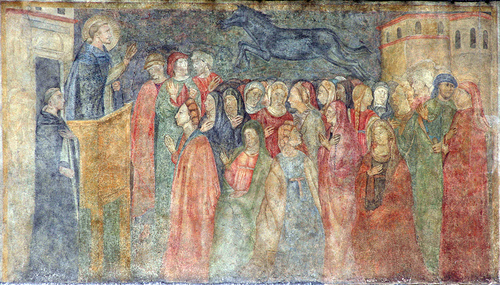In therapy there is an understanding that when a therapeutic relationship has been established, the client will likely experience transference during which the therapist unconsciously emotionally represents some other individual in the client’s life. The therapist can use this occasion to teach healthy interpersonal dynamics, such as how to express a need or confront when conflict arises. As the therapist grows in care for the client, the therapist may experience counter-transference. This experience of emotionally considering the client as the therapist considers someone else in his or her life is to be guarded against, as it brings the therapist’s personal feelings onto the stage rather than being totally present and open to the client’s own story.
This idea, that the relating which takes place in a relationship and the transferring of those feelings to another object goes beyond Freud’s couch. Richard John Neuhaus relates the classical explanation of it, called the I-you relationship, by Martin Buber: “the I-you relationship between persons carries within it the hint of the I-Thou relationship to the mysterious, to the Divine, to the strange glory.”
In Death on a Friday Afternoon, Neuhaus’ third meditation on the last words of Christ brings the reader to consider Buber’s proposition in light of the magnificent role of mother.
“Of course the child does not come into the world asking questions such as, Why is there something rather than nothing? Or, Why am I rather than someone else where I am? Balthasar writes: “And yet the child is aware, in the first opening of its mind’s eyes. Its ‘I’ awakens in the experience of a ‘Thou’: in its mother’s smile through which it learns that it is contained, affirmed, and loved in a relationship which is incomprehensibly encompassing, already actual, sheltering and nourishing.”
There are those who would like to dismiss psychodynamic theory Freud’s because of Freud’s over-emphasis on sex. Freud saw a dynamic life and key developmental points at the early stages of infancy. As one neo-Freudian psychologist relates more clearly, the infant at first does not distinguish itself from its mother. In time, the child learns to see itself as a self, and mother as and other. Whether he identifies with his mother or determines his sense of self as a contrast to mother, this comes later.
Of greatest importance here is the strange glory of parenthood which can lead a child to its later conception of God and the child’s sense of worth. Neuhaus explains
“Everything is all right,” says the mother to the child crying in the night, and in that “Everything is all right” the child intuits a grand metaphysical statement about the nature of reality. In trusting the mother’s assurance, the child trusts that the universe is home, that he or she belongs here.”
So if the child is able to be free and secure in its mother’s love, this serves as a model for the later call of faith, to be like a child.
“Truly, I say to You, unless you turn and become like children, you will never enter the kingdom of heaven,” Jesus would later say. That turning is conversion, and it is in part a turning back. It is a retrieval of that first awakening to a world when all was miracle and all was play, when all was well in the security of a mother’s love.”
We’re called to experience that same security in God, that all will be well. Yet it is not regression, but rather “a matter of deciding, and deciding again and again.”
There are a thousand other moments between mother and child that serve as model for that child to one day call God Father. The faithfulness of the parents lay the foundation of understanding. As with any foundation, should there be some alien dust specks in the materials, the foundation can still be strong. So we ought not to worry too terribly that we are not perfect, that we fail, time and again, to be the parents we desire to be. In the end, all have fallen short of the glory of God, and parenthood is only a model, only a physical sign of a spiritual reality, that God is the perfect Father, complete in Triune unity, total self-gift.
So while the typical adolescent will wrestle with all the ways his typical parents are no longer a totally secure base but human, full of baggage and full of flaws, this can open the young adult to the reality of God who fills all things. This can help make peace with the absence of the parent, or the flaws of the parent, and aid the forgiveness and healing of broken relationships.
And if that was possibly not enough, for those whose mothers were absent, Our Lady of Guadalupe says, “Do not let anything afflict you and be not afraid of illness or pain. Am I not here who am your Mother? Are you not under my shadow and protection? Are you not in the crossing of my arms? Is there anything else you need?”










